a. Integrated Simulation for FW vehicles
Flapping Wing Air Vehicles

 Research
Research
 Flapping Wing Air Vehicles
Flapping Wing Air Vehicles
 a. Integrated Simulation for FW vehicles
a. Integrated Simulation for FW vehicles
a. Integrated Simulation for FW vehicles
Principal Investigator: Jae-Hung Han
Participating Researcher : Hyeon-Ho Yang, Sang-Gil Lee, Yujeong Han
Related Projects: NRF-UVARC(한국연구재단-무인이동체원천기술개발사업단)
Related Recent Publication:
- Nguyen, A. T., Han, J.-H. and Vu. T. T., “The Efects of Wing Mass Asymmetry on Low Speed Flight Characteristics of an Insect Model,” International Journal of Aeronautical and Space Sciences, Vol. 20, No. 4, pp.940-952, Dec. 2019.
- Nguyen, A. T., Tran, N.D., Vu. T. T., Pham. T. D., Vu. Q. T. and Han, J.-H., “A Neural-network-based Approach to Study the Energy-optimal Hovering Wing Kinematics of a Bionic Hawkmoth Model,” Journal of Bionic Engineering, Vol. 16, No. 5, pp. 904-915, Sep. 2019.
- Nguyen, A. T., and Han, J.-H., “Wing flexibility effects on the flight performance of an insect-like flapping-wing micro-air vehicle,” Aerospace Science and Technology, Vol. 79, pp. 468-481, Aug. 2018
- Kim, J.-K., Han,J.-S., Lee, J.-S., Han, J.-H., “Hovering and forward flight of the hawkmoth Manduca sexta: trim search and 6-DOF dynamic stability characterization”, Bioinspiration & Biomimetics, Vol. 10, pp.20, Sept. 2015
- Kim, J.-K., and Han, J.-H., “A multibody approach for 6-DOF flight dynamics and stability analysis of the hawkmoth Manduca sexta,” Bioinspiration & Biomimetics, Vol. 9, No. 1, 016011, 2014
Aerodynamics and dynamic flight stability of insect-like flapping-wing MAVs
1.Goals
Develop efficient and robust computational methods to simulate the unsteady aerodynamic characteristics of insect flapping wings. Establish an accurate wake pattern in the simulation environment2. Approaches
Computational models based on the potential flow theory for the unsteady aerodynamics of insect flapping wings Multi-flexible body dynamics simulation3. Recent Achievements
Aerodynamic modelling and wake pattern of insect-like FWMAVs- Modified discrete vortex method (MDVM): simulates the 2-D unsteady aerodynamics of insect flapping wings, including the viscous diffusion
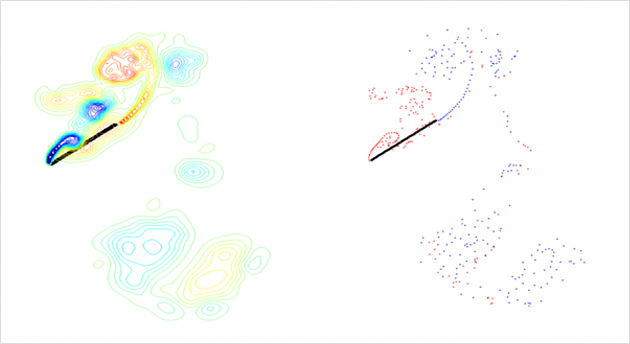
Fig.1 Vorticity contours generated by a 2-D insect flapping wing model by MDVM
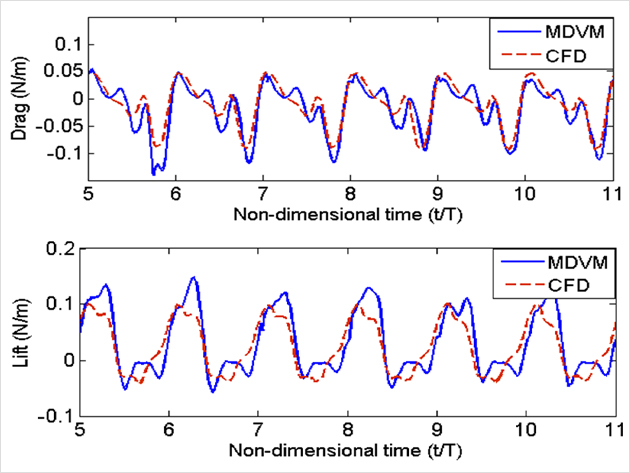
Fig2. Lift and drag by MDVM and CFD
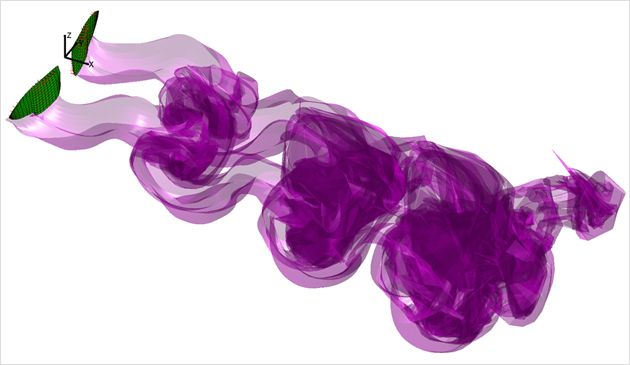
Fig3. Wake pattern of insect wings by the extended UVLM

Fig4. Aerodynamic forces and moment of an insect wing by the extended UVLM and CFD
- Modified discrete vortex method (MDVM): simulates the 2-D unsteady aerodynamics of bird flapping wings
Flight dynamics, stability, and control of insect-like flapping-wing MAVs
1.Goals
Develop effective control algorithms to stabilize highly non-linear flight dynamic characteristics of the ornithopters, and to enhance their controllability2. Approaches
Modal-based flexible multi-body dynamics Semi-empirical flapping-wing aerodynamic model3. Recent Achievements
Integrative Ornithopter Flight/Control Simulation Framework- Ornithopter flight dynamics simulation framework for the preliminary design process
- Fluid-structure interaction (FSI) of flapping wings
- Experimentally verified reduced-order flapping-wing aerodynamic model (Modified Strip Theory, MST)
- Flight controller evaluation through a flight control module
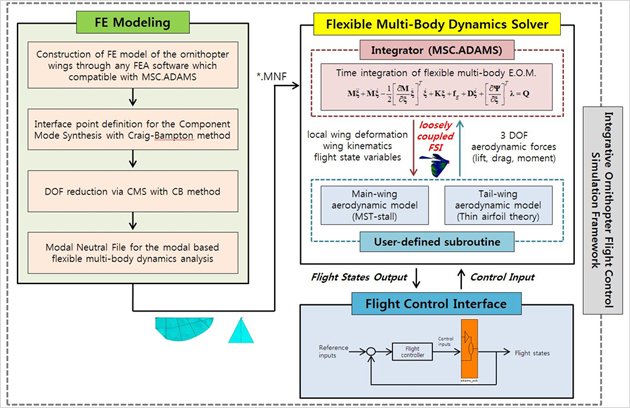
Fig5. Eigenvalues of longitudinal and lateral dynamics of insect flight at different speeds
Effect of Lateral Gust Simulation
Free Foward Flight Simulation
Free Hovering Flight Simulation
- Model insect: Hawkmoth Manduca sexta
- Wing flexibility and its fluid-structure interaction (FSI) are taken into account
- Flight stability characteristics and efficient control strategies (on-going)
- Trimmed flight conditions: found by the trim search algorithm, coupling the extended UVLM with the multibody dynamics code in the simulation environment of MSC. Adams
Insect flight simulation using UVLM Adams
- Dynamic stability
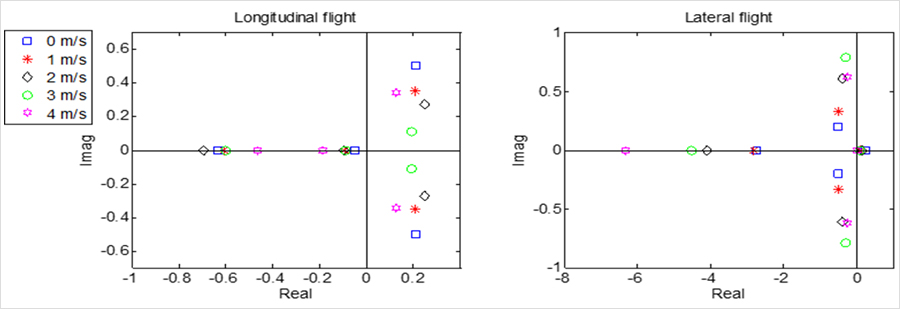
Fig6. Eigenvalues of longitudinal and lateral dynamics of insect flight at different speeds













